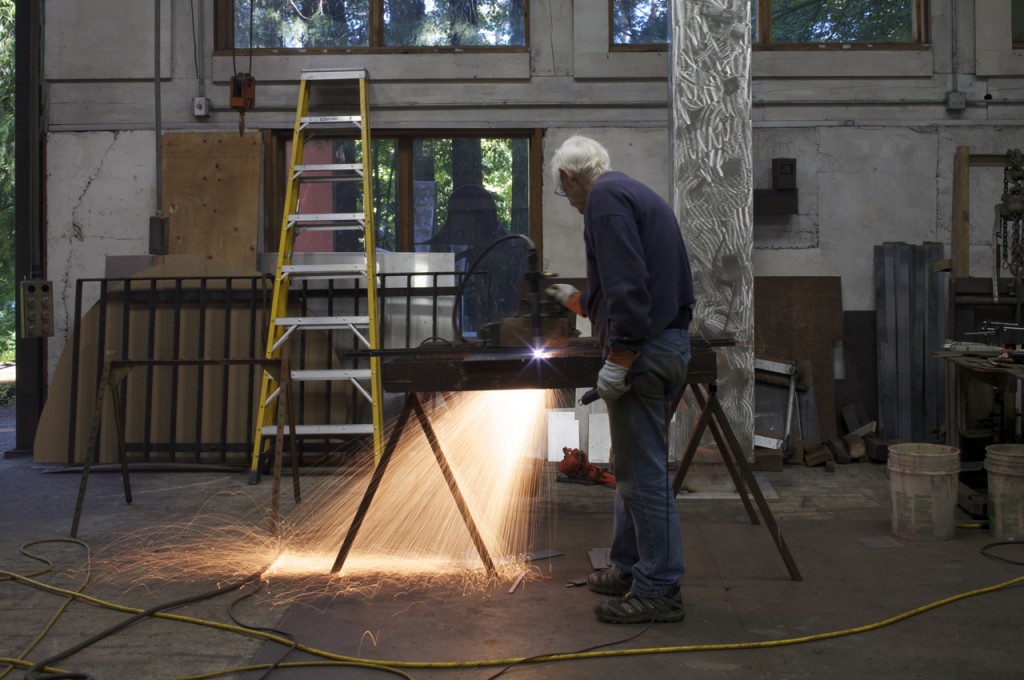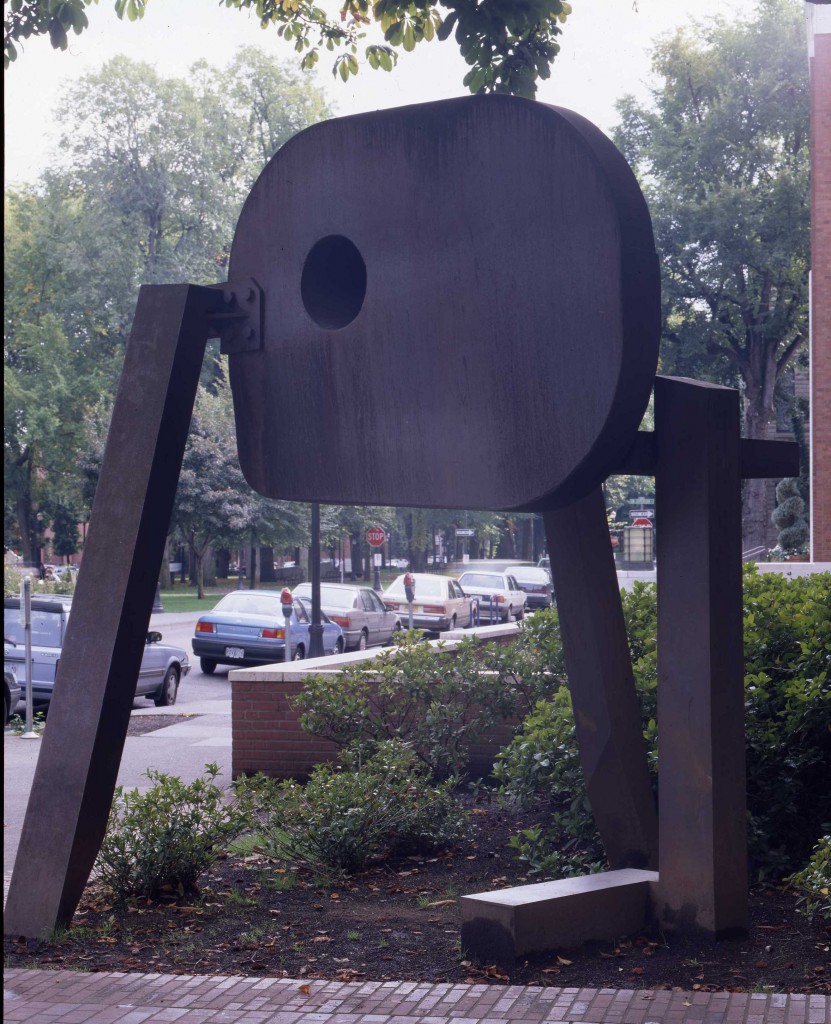
By Bob Hicks
The best way to see the art of Lee Kelly, if you’re not lucky enough to visit his studio and expansive sculpture garden near Oregon City, is to hop on the bus or your bike or just start hoofing it around Portland. The city and its suburbs are speckled with his large public pieces, which have gone a long way toward defining a Pacific Northwest vision of a place where the natural and the man-made can coexist in harmonic creative tension.
 Of course, taking the grand tour can be a bit strenuous. So before you pull out your official Lee Kelly art-hop map (the Portland Art Museum has handily created one, in easy-fold form, which will guide you to 31 sculptures in the greater Portland area and down the Willamette Valley as far as Eugene) head on down to the museum to take in the crackerjack retrospective of Kelly’s work that opened Saturday and continues through January 9.
Of course, taking the grand tour can be a bit strenuous. So before you pull out your official Lee Kelly art-hop map (the Portland Art Museum has handily created one, in easy-fold form, which will guide you to 31 sculptures in the greater Portland area and down the Willamette Valley as far as Eugene) head on down to the museum to take in the crackerjack retrospective of Kelly’s work that opened Saturday and continues through January 9.
Since Kelly’s been an active artist for more than 50 years, that’s a lot of retro to inspect. (The museum has also published a lavish and fitting catalog to accompany and expand on the exhibition.) But it’s a fascinating time trip, reaching all the way back to the heady days of abstract expressionism. Curator Bruce Guenther defines those brash young painting days as the first of three key periods in Kelly’s career, followed by his busy years of making large metal public work and a latter, reflective period — in Guenther’s words, “the post-public Kelly,” during which he’s created “not monuments, but personal landscapes.”